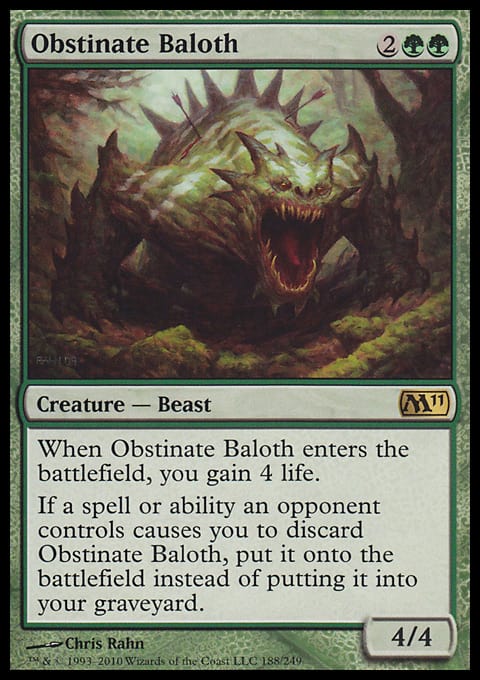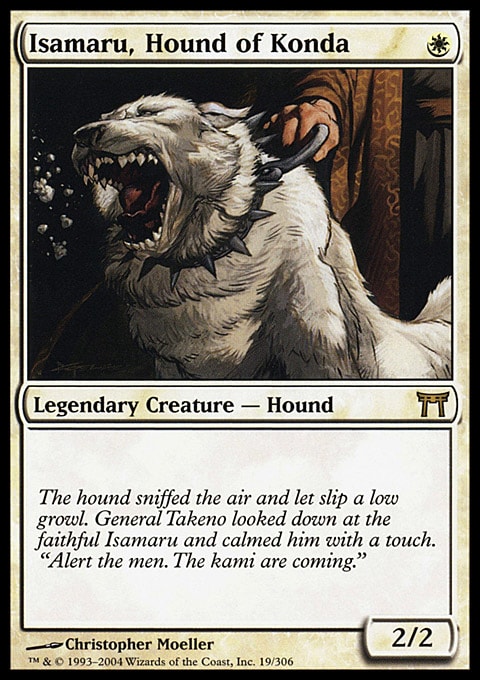What Is Aggression?
Continuing the theme from last week, how do you become better at Magic? What skills do you need to develop? What do you need to think about? These are all interesting questions, but the most interesting question of all is this: Where do you start?
If you were teaching a new player the game, what would you start that person with? My answer is simple: aggro decks. Whether it be aggro-control, pure aggro, midrange aggro, swarming aggro decks . . . whatever it is, I would want my new player to attack as often as possible as early as possible. Why?
Aggression is a gatekeeper. To understand any game state, and therefore any game, you must know how to attack.
This principle applies to the vast majority of games, which is why when I approach any game, I learn to attack first. But why is this?
Most games are designed around achieving some proactive objective, generally killing your opponent or capturing some key location or game piece. In order to do this, you have to attack in some way. Thus, the core of many games involves an ebb and flow between offense and defense, which is what makes them exciting.
Aggression is how players win games. However, most games also build in a natural defender’s advantage. Proper defense requires knowledge of proper offense. Defending correctly requires knowing how to attack correctly. Let’s take a look at another game: chess.
The line I want to look at specifically is called the Fishing Pole. It is a variation of the Ruy Lopez Berlin Defense. Here’s the basic opening:
Fishing Pole Opening:
Now let’s look at the most threatening line:
Main Trapping Line:
The main threat of the line is pressure down the h-file after it is opened via sacrificing the knight on g4. The queen is central to mating lines, threatening mate on h2 and h1, using white’s castled position against him. Thus, to use the fishing pole attacking, white must accept the “bait” of the knight on g4, and black should not trade queens. Knowing this, white can decline to open the h-file for a period of time, choosing to play a bit more standard and simply develop pieces. Let’s take a look at how that might develop:
Continuation 1:
Here, white looks fine. His pieces are more developed, and there are no huge positional weaknesses. Can white take the proffered knight in this position? Of course, the answer is “no.” Here’s what a sample line might look like:
Continuation 2:
You can see how black uses pressure along the g1–a7 diagonal and a pin on the f2 pawn to generate an extremely strong position. The queen–rook battery on the h-file combined with the pressure of the c5 bishop on the f2 pawn causes huge headaches for white in his underdeveloped position. It’s important to note that in many cases, d4 doesn’t do much to relieve the pressure on the g1–a7 diagonal, as the e5 pawn often allows the bishop to simply capture and maintain the pressure. The move d4 alongside c3 can buy white some time, but that’s all.
Now, what if white tries to deal with the situation by forcing f6, blocking the d1–h4 diagonal and thus delaying the queen’s move to the h-file?
Continuation 3:
Black can build an advantage through some very straightforward, largely forcing play. The h-file still proves to be problematic, and the c5 bishop is still not really dealt with. But what if white tries to be cute by trading off the c5 bishop with Be3 early in the line? Well, let’s take a look. This time, we’re starting from a slightly different position shown below:

This position can be achieved via a slightly different move order involving a6 before Nf6. Let’s see what happens if white tries to play Be3 after capturing on g4.
Continuation 4:
Through simple, forcing play, black can build an advantage. In this position, he is up a pawn in material, and the h-pawn will have to be exchanged, giving black an easy opportunity to double his rooks on the h-file after O-O-O (castling queenside) or simply moving the king off the back rank. If white tries to avoid the exchange by playing g3, his position is going to fall apart. The h-pawn is too powerful.
The fishing pole is an extremely strong attack centered around pressure on the h-file and the g1–a7 diagonal. Without a clear understanding of the perils of the position, it is difficult for white to defend correctly. However, white can defend by maintaining a closed h-file and blocking the g1–a7 diagonal. A defensive game from white probably looks something like this:
Continuation 5:
Even in this situation, white isn’t out of the woods, but he’s in much better shape. So, we see that defending any attack requires a solid understanding of the attack in question.
This begs the question: Why defend at all if you can just attack? Why is defensive play so strong in many instances?
The answer lies in defender’s advantage. Often, defending correctly (cost-efficiently) results in an advantage for the defender. This is the inherent power of defense and stems from the defensive player’s reactionary position, which allows him to deploy his resources in the most efficient manner possible.
Let’s focus on Magic. We have many different ways of taking aggressive stances:
- Pure aggro – Brozek Deck Wins (R/W landfall)
- Aggro – Zoo, Boros (with Ranger of Eos and Figure of Destiny)
- Swarm aggro – Examples include white weenie strategies and Tempered Steel decks.
- Midrange aggro – Examples include R/G beats or G/W aggro (Silverblade Paladin, Thragtusk, etc.).
- Aggro-control – Delver and the like
(Note: Pure aggro differentiates from aggro by attempting to deal 20 damage as fast as possible with minimal to no concern for what the opposition is attempting to do. Aggro decks often slide off this by featuring small bits of disruption or planning for the midgame with cards such as Koth of the Hammer.)
These archetypes all attack from slightly different angles and require different responses. Yet throughout history, you’ll see that midrange or control decks are often the dominant decks in formats. Why?
The Strengths and Weaknesses of Aggression
Aggression’s main strengths are as follows:
- The ability to punish misunderstanding and misplay
- The ability to find and exploit small openings (magnify mistakes)
- A stronger ability to take advantage of hidden information
Let’s take a look at these ideas:
- Consider what happens if you forget to play your Obstinate Baloth on turn four. If you are facing Zoo, you’re almost certainly dead. But if you are facing a slow deck such as W/U control, it may ultimately not be very important. The aggressive stance gives Zoo the ability to punish you for your mistake.
- Consider a situation in which you are playing Esper control on the draw and your opening hand is as follows: Arcane Sanctum, Glacial Fortress, Celestial Colonnade, Kitchen Finks, Day of Judgment, Counterspell, Fact or Fiction. Suppose your second draw is Hallowed Fountain and you draw no other lands. What happens if you make the mistake of opening with Glacial Fortress? In a control mirror, it probably doesn’t matter, but against an aggressive deck, you will miss either your turn-three Kitchen Finks or your turn-four Day of Judgment, a situation you might not survive. That’s mistake magnification right there.
- Consider playing against Delver a few months ago. Do you play around Vapor Snag, Mana Leak, or Gut Shot? What about Restoration Angel and Snapcaster Mage? Often, different cards from Delver necessitated different responses, and Delver of Secrets and/or Geist of Saint Traft would punish you if you chose the wrong one.
If you aren’t attacking, you can’t punish every mistake and every misunderstanding.
If attacking is so powerful, why do people play control, and why does control win so often? What are the disadvantages of aggression?
- Aggression is predictable – If you are going to attack, your attack is along specific lines (see fishing pole and h-file and g1–a7 diagonal). This reduces the area your opponent has to cover to stop your attack.
- You don’t have defender’s advantage
In Magic’s case, defender’s advantage is quite strong. The three main sources are:
- The Philosophy of Fire – The full theory actually relates to the concept of your life total as a resource. You can exploit this as an offensive strategy, which is the way most people think about it. The flip side is that you can trade your life total for other resources (typically information or board development). This is powerful because aggressive stances tend to not take advantage of this.
- Threat scaling – 6-mana threats are more powerful than 2-mana threats. Thus, by foregoing aggression and relying on stronger individual threats, you gain the ability to neutralize multiple threats with a single threat of your own.
- Power of answers – Defensive cards are more powerful than offensive cards. At 1 mana, offensive players have Isamaru, Hound of Konda. At 1 mana, defensive players have Swords to Plowshares. The power and flexibility built in to defensive cards is an element to the creation of defender’s advantage.
Conclusion
This topic arose because I feel that I’ve neglected aggression in my own play recently. I’ve been playing too many durdly blue decks, and while I love me my durdles (even more than LSV), knowing how to attack is a huge part of knowing how to durdle. It’s time that I went back to the root of gameplay: aggression.
In the end, all roads lead back to aggression because it is central to both attacking and defending correctly. Learning and understanding the various lines players and decks can take is central to success in every game and across games and tournaments. It shows up in Constructed, in Limited, in Mental Magic, and in deck-building. Aggression is the heart of the game, and it’s always wise to reconnect once in a while.
So, as much fun as playing a Genesis Wave for 1,000 is, go out and pound some faces every once in a while. It’s just as therapeutic; I promise. Maybe you’ll even learn to love it.
Chingsung Chang
Conelead most everywhere and on MTGO
Khan32k5 at gmail dot com























